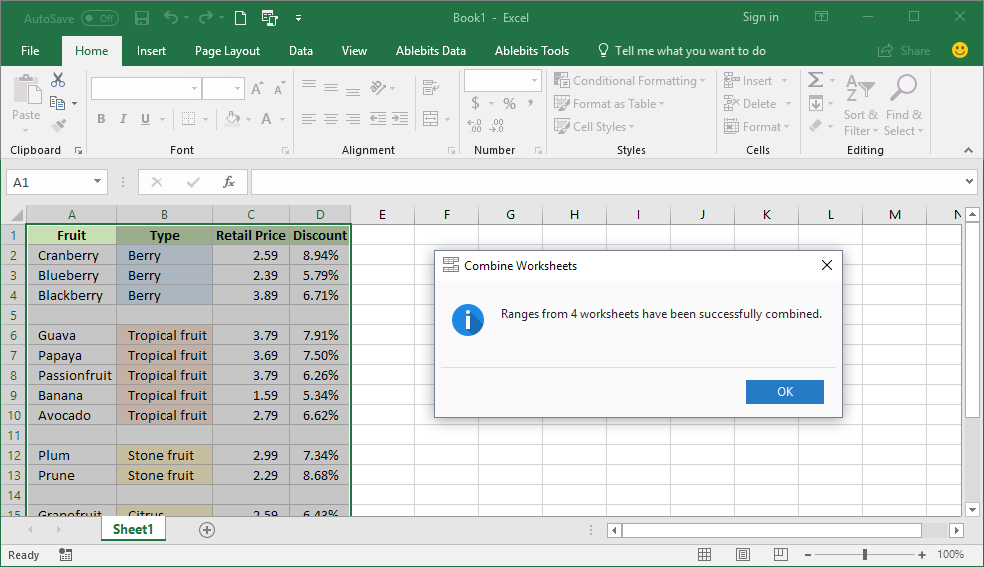5 Simple Ways to Merge Excel Sheet into Word

Merging Excel sheets into Microsoft Word documents is a common task for many professionals, whether you're compiling data for reports, creating charts for presentations, or simply wanting to include detailed spreadsheets in your documents. Here, we'll explore five simple ways to achieve this, catering to different levels of expertise and technical capabilities.
1. Copy and Paste Method


The simplest way to merge an Excel sheet into a Word document is through the copy and paste functionality:
- Open your Excel workbook and select the cells you want to merge.
- Right-click and choose Copy or press Ctrl + C.
- Open your Word document, place your cursor where you want to insert the Excel data, right-click, and select Paste or press Ctrl + V.
This method is ideal for small to medium-sized data sets where you don’t need to update the data frequently in Word after the initial insertion.
💡 Note: Pasting data as an image in Word might preserve formatting but it won't allow you to edit the data within Word.
2. Object Embedding


To keep your Excel data dynamic within Word:
- In Word, navigate to the Insert tab, click Object > Create from File.
- Browse to your Excel file, select it, and click OK.
- Choose whether to link the Excel file or embed it entirely. Linking allows you to update the data directly from Excel, while embedding places the Excel file within your Word document.
Embedding an object allows for data interaction within Word but increases file size since the entire Excel file is stored in Word.
3. Table Embedding

Another option is embedding an Excel table:
- In Excel, select the range of cells you wish to insert into Word.
- Right-click, choose Copy, then in Word, select Home > Paste > Paste Special.
- Choose Microsoft Excel Worksheet Object and decide if you want to link or not.
This method offers the benefit of preserving Excel’s formatting and formulas, providing dynamic interaction in Word.
4. Mail Merge


Mail merge can be particularly useful for merging data into documents for mass communication:
- In Word, go to Mailings > Start Mail Merge > Step by Step Mail Merge Wizard.
- Follow the wizard, selecting Letters, then Use the current document, and finally choose Existing list to connect to your Excel file.
- Insert your merge fields where you want the data to appear in your Word document.
This method is excellent for personalized documents where data fields from Excel replace placeholders in Word.
📌 Note: The Excel sheet needs to be formatted correctly to ensure a smooth mail merge process.
5. VBA and Macros


For those with some programming knowledge, VBA (Visual Basic for Applications) can automate this merging process:
- In Word, press Alt + F11 to open the VBA editor.
- Insert a new module and write or copy the VBA code to pull data from Excel.
- Run the macro to integrate the data into your Word document.
Here’s a simple example:
Sub ImportDataFromExcel()
Dim xlApp As Object
Dim xlBook As Object
Dim xlSheet As Object
Set xlApp = CreateObject(“Excel.Application”)
Set xlBook = xlApp.Workbooks.Open(“C:\YourPath\To\ExcelFile.xlsx”)
Set xlSheet = xlBook.Worksheets(1)
Dim i As Integer, j As Integer
For i = 1 To 10
For j = 1 To 5
Selection.TypeText Text:=xlSheet.Cells(i, j).Value
Selection.TypeParagraph
Next j
Next i
xlBook.Close False
xlApp.Quit
Set xlSheet = Nothing
Set xlBook = Nothing
Set xlApp = Nothing
End Sub
Using VBA provides flexibility and automation, making the process repeatable and efficient for multiple documents or regular updates.
Benefits of Merging Excel Data into Word

- Streamlined Reporting: Consolidates data and documentation into a single document.
- Customization: Allows for personalization in mass communications.
- Efficiency: Reduces the time taken to manually transfer data between applications.
By following these methods, you can enhance your workflow, whether you're creating comprehensive business reports, managing personalized communications, or just seeking to integrate your spreadsheets into your Word documents seamlessly.
Integrating Excel data into Word documents enhances productivity by reducing manual data entry, ensuring data consistency, and allowing for dynamic updates. Each method has its strengths, from the simplicity of copy and paste for one-time use to the automation and update capabilities of VBA for ongoing projects. With these techniques, you're equipped to handle a variety of scenarios where Excel and Word integration is key.
How can I update data in Word after I’ve embedded an Excel chart?

+
If you’ve used the Object Embedding method with linking, you can update the chart by opening the source Excel file and refreshing the chart in Word. If you’ve embedded the chart without linking, you would need to re-embed the updated Excel chart into Word.
Can I edit the Excel data within Word?

+
Yes, if the Excel data is embedded as an object, you can double-click the table or chart in Word to open Excel editing features. Remember, changes made this way might not sync with the source file if you’re not linked.
What if my Excel file is large?

+
Consider using the linking option with Object Embedding or Mail Merge if your file is large. This reduces the size of your Word document as it will only contain a link to the Excel file, not the data itself.
How do I handle password-protected Excel files when merging into Word?

+
To use data from password-protected Excel files, you need to enter the password when prompted during the embedding process. For VBA, you’ll need to include code to handle the password prompt.